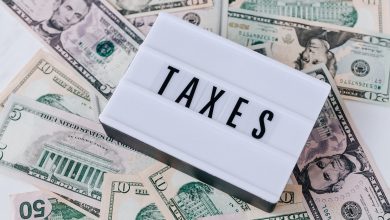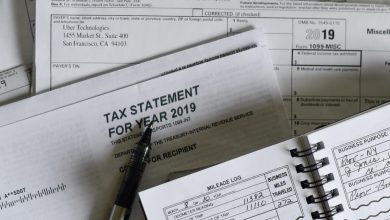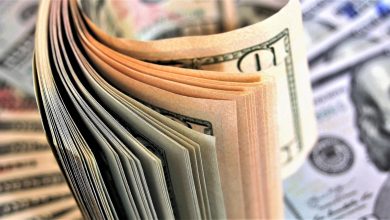Take Advantage of these Investment Tax Deductions

The Tax and Jobs Cut of 2017 severely reduced the investment tax deductions available to you. But there are still some useful tips and tricks you can use to lower your tax bill. Below, we’ll go over investment tax deductions you may have overlooked, and the most effective ways to pay the least amount of taxes on your investments.
Investment Interest Expense
Investment interest expense is the interest you pay when you borrow money to buy an investment. If you itemize your deductions, you can add up your interest expenses for investments and deduct up to the amount of your investment income. These deductions also include any loans bought on margin to buy stocks. But they do not include loans purchased for tax-advantaged investments, such as an IRA.
A bonus to this deduction is that any leftover interest expense is carried over to the following year.
To figure out how much interest you can deduct, you’ll need your net investment income, which includes any ordinary dividends or interest income. It does not include any income from the sale of a stock, qualified dividends, or interest on a bond.
Using an example, let’s say Gene had $100,000 of total income and $7,000 worth of investment income, with $10,000 worth of expenses from investment interest. Gene could deduct up to $7,000 of the investment interest, the remaining $3,000 would be carried over to the next year, and his taxable income would be reduced to $93,000.

Convert Qualified Dividends into Ordinary Income
We just went over how qualified dividends don’t get taxed as investment income, but they do still get taxed at the lower capital gains rate of 15 percent. So in certain instances, converting your qualified dividends into ordinary income can save you money.
Let’s continue with the example above. If Gene had $3,000 worth of qualified dividends in 2020, they would be taxed at the capital gains rate of 15 percent. The tax on those dividends would come out to $450 (3,000 x 0.15). If Gene instead classifies those qualified dividends as ordinary income, he could then deduct the full $10,000 worth of investment expenses that year. This would mean that he does not have to pay taxes on the qualified dividends but would also have no money carry over to the next year.
Offset Income using Capital Losses
If you have capital losses, you’ll first use these to offset any capital gains. But if you have more losses than gains, you can apply up to $3,000 of your excess capital losses to offset your ordinary income and lower how much tax you owe. Any net losses above $3,000 are carried over to offset capital gains the next year.
For example, say you have $15,000 in capital losses and $10,000 in capital gains in one year. The first $10,000 of your capital losses will offset all your capital gains. Of the remaining $5,000 in capital losses, you can lower your ordinary income by $3,000. The final $2,000 can be used to offset capital gains in the next year.

Reinvested Dividends
Often in a mutual fund or portfolio of stocks, the dividend you receive on your shares is automatically reinvested into extra shares. But even though you immediately put that money back into the company, you still owe a dividend tax on that amount. Some companies make it simple to reinvest your dividends by creating a dividend reinvestment plan (DRIP).
If a company has a DRIP set up, you get to avoid the commission fees you may typically have to pay to trade, and you don’t have to worry about your money sitting idle and not earning. You’re also able to buy partial shares of a company.
But DRIPs are taxable, just as any other dividend would be. If you are married and file jointly with less than $77,200 in gross income, you are in the zero percent tax bracket for qualified dividends. The same goes for the head of the household making less than $51,000 and single filers making less than $38,600.
The next bracket up taxes 15 percent for qualified dividends. This bracket includes those who make between $38,600 and $425,800 as a single filer, $77,200 to $479,000 if you’re married filing jointly, and $51,600 to $452,400 if you are the head of the household.
The 20 percent tax bracket is for single filers with an income over $425,800, married filing jointly with over $479,000, and over $452,400 for the head of the household.
An additional surcharge of 3.8 percent is added for single filers making over $200,000, married filing jointly making over $250,000 and over $200,000 for the head of the household. This means that the highest tax bracket for qualified dividends is 23.8 percent – at the federal level. Most states, 41 of the 50, then swoop in and charge an additional tax on your capital gains.

So how can you beat this tax?
The easiest way to avoid the dividend reinvestment tax is to invest in tax-advantaged accounts like an IRA or 401(k). An IRA and a 401(k) are considered tax-deferred accounts. Any contributions you make to them are tax-deductible that year, but when you withdraw funds in retirement, it will be taxed as income.
Better yet is a tax-free account such as a Roth IRA or Roth 401(k). Your contributions are not tax-deductible, but when you withdraw from them in retirement, the funds are not taxed.
A 401(k) limits you to around 20 mutual funds. If you want more control over your investments, an IRA offers thousands of different funds and stocks to invest in.
This is not to say that dividend stocks aren’t valuable because you get taxed twice. Dividend stocks will still end up providing more income than non-dividend stocks. The key is to report your tax basis correctly.
For example, let’s say you began with $5,000 worth of stock and reinvested $250 worth of dividends each year for four years. At the end of the four years, you sell your total investment for $7,500. If you report an original investment of $5,000, then you’ll be taxed for a gain of $2,500. But in reality, your cost basis went up to $6,000 due to your dividend reinvestments. Many people report the original $5,000 and end up getting taxed for more than they should.
Paying taxes is already a pain, and the only way it gets worse is by paying more than you should.



